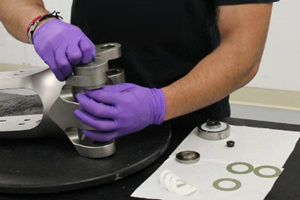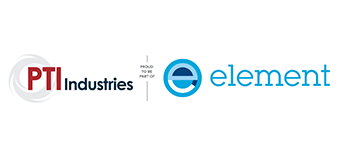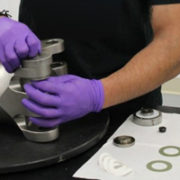Surface Preparation for Adhesive Bonding
 When making a quality adhesive bond, the first critical step is selecting the proper adhesive. Once the adhesive type is determined, the second important step is surface preparation.
When making a quality adhesive bond, the first critical step is selecting the proper adhesive. Once the adhesive type is determined, the second important step is surface preparation.
Adhesive bonds are made to adhere other components to substrate surfaces, but because most surfaces are covered with contaminants, if not removed, bond failure will often result. Even microscopic surface contaminants can obstruct the surface, creating weak boundary layers which drastically reduce adhesion effectiveness.
A typical substrate surface exhibits contaminants in several layers:
- Dust, parent material and other loose particles make up the outermost layer.
- Oils and grease comprise the next layer.
- Oxide films, rust, molds, and additives such as paint and sealants are potential boundaries embedded into the substrate as the innermost layer.
With proper surface preparation, bond failure can be avoided. Pre-Bond treatments vary depending on the type of substrate material as well as the structural bond required.
Depending on the substrate material, surface preparation can include three steps:
- Degreasing: Degreasing with a solvent or aqueous detergent removes the outer layer of contaminants such as dust, metal chips, grease and machine coolant. To check for sufficient cleanliness, a water break test is performed, water is sprayed onto the part, if it runs off in a continuous sheet it’s clean, if it beads up like a freshly waxed car it means the surface isn’t clean enough.
- Abrading: Abrading eliminates the layer of films, oxides, rust, and paint clinging to the surface. All loose particles from abrading must be removed with degreasing and cleaning.
- Surface alteration: Certain materials present the greatest challenge in adhesive bonding, such as rubber, some plastics, and metals such as copper, stainless steel, and aluminum. Changing the surface property of these materials increases the surface energy for best adhesion. PTI uses media blast cabinets as the preferred method of abrasive blasting because it cleans surfaces better and faster than the traditional techniques of sanding and wire brushing.
All surface preparation methods must include a final cleaning and drying before adhesive bonding occurs, this is customarily done by hand wiping with a high purity solvent, the bonding must be done as soon as possible so surfaces do not become recontaminated.
For every material and surface there is a right combination of adhesive material and surface preparation. We employ our many years of experience to Identifying the best combination that will be the best for your substrate application.
PTI’s special processes includes advanced precision cleaning technology and a dedicated 38,500 SF adhesive bonding facility that maintains two Contamination Controlled Areas for all your one-stop process needs.



Leave a Reply
Want to join the discussion?Feel free to contribute!